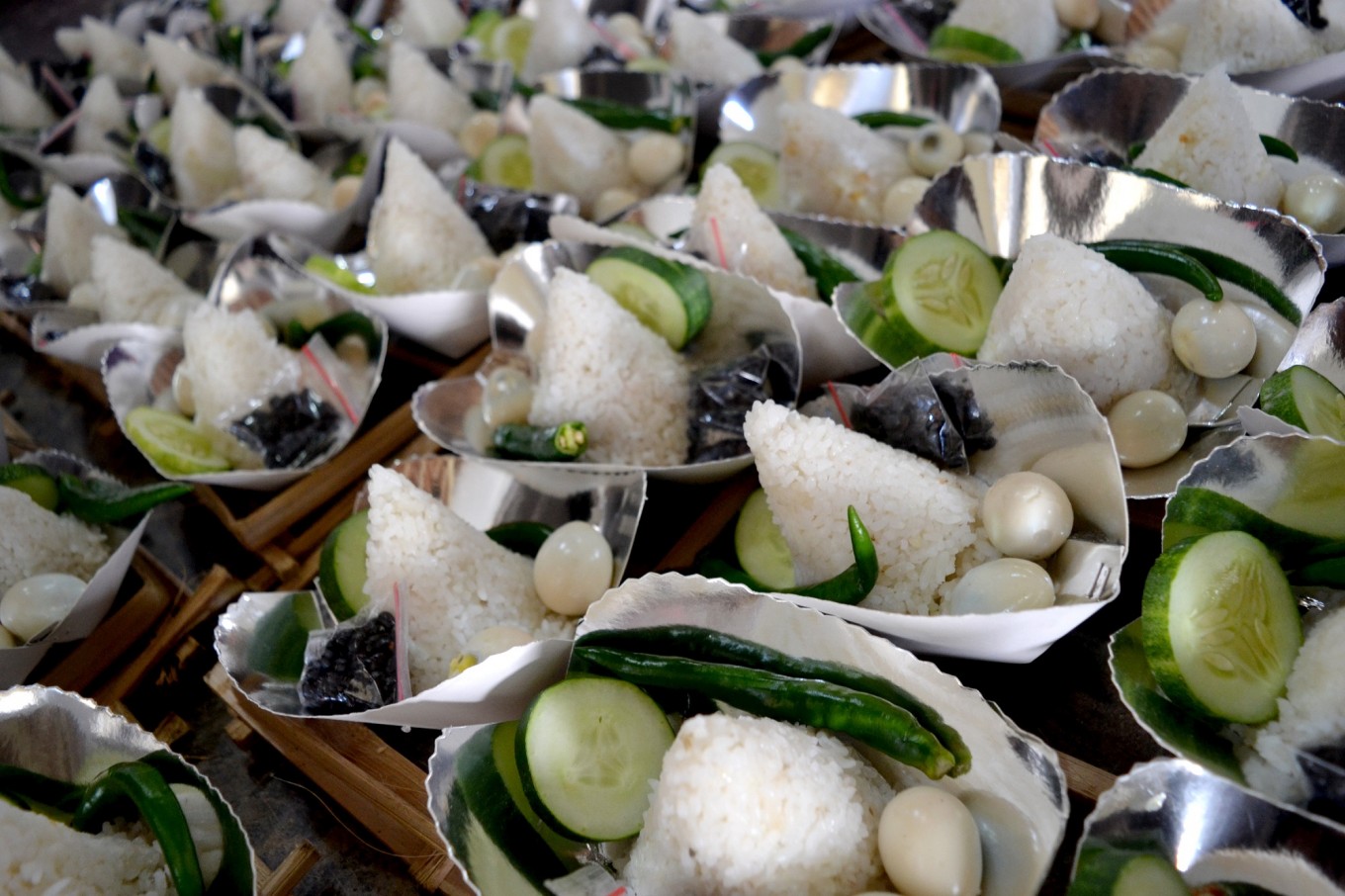Popular Reads
Top Results
Can't find what you're looking for?
View all search resultsPopular Reads
Top Results
Can't find what you're looking for?
View all search resultsGetting to know 'sego wuduk', trademark dish of 'Malem Selikuran'
"Sego wuduk" is the customary dish of the Malem Selikuran ceremony, held to welcome Lailatul Qadar (the revelation of the Quran) in the month of Ramadhan.
Change text size
Gift Premium Articles
to Anyone
T
he Kasunanan Palace in Surakarta, Central Java, held the Malem Selikuran ceremony, routinely held on the 21st day of Ramadhan to welcome Lailatul Qadar (the revelation of the Quran), on June 5.
It began with a parade from the palace to Kebon Raja (King’s Garden) in Sriwedari Park, covering a distance of 2.5 kilometers.
Participants carried lanterns and offerings along Jl. Slamet Riyadi, Surakarta’s main street, with music blaring from the palace’s marching band and a group playing "Gending Corobalen" and "Santiswara" (minimalist gamelan music pieces).
On the park’s veranda, 1,000 portions of sego wuduk (rice cooked with coconut milk) were presented for the palace’s servants and the public. The rice is usually handed out at the end of the ceremony, and would often be gone in five minutes.
One day prior to the ceremony, Gondorasan, the palace’s kitchen, became the center of preparing the sego wuduk. Gondorasan, meaning aroma and flavor, is where Kusdarsinah and 10 other servants prepare everything needed for rituals at the palace.
Read also: Nine Surakarta kampung ready to host tourists
“In one year, there are around seven major ceremonies in the town. We prepare everything here. Outside those ceremonies, we routinely cook every legi Tuesday and Thursday (the first day in the Javanese five-day week),” she said.
“It is not difficult to cook sego wuduk, however, the spice measurements have to be precise,” Kusdarsinah added. To maintain its flavor quality, every sego wuduk dish is tasted by every servant present during cooking. The process would only be carried on once they approve.
Once cooked, sego wuduk would be shaped into a small cone and served on takir (small bowl made of paper or leaf) along with sautéed black soy, quail eggs, green chili and cucumber.
One day prior to the Malem Selikuran ceremony, female servants in the kitchen prepare all ingredients. On the day of the ceremony, they begin to cook the rice at noon. To gain its distinct savory flavor, the rice is boiled in coconut milk with lemongrass, bay leaves, lime leaves, sugar and salt. It is then steamed until properly cooked.
Sego wuduk, often called savory rice or rice of blessing, is mostly served with fried sambal, grilled chicken and rambak (crackers made of cow skin). The dish is customary during religious ceremonies in the palace and in people’s homes, such as birthdays, death anniversaries and Sedekah Bumi (offering to the earth).
Read also: Enjoying legendary 'Jenang' in Surakarta
KRAT. Kurdiyanto Nagoro, an official at the Kasunanan Palace, said the Malem Selikuran ceremony is held as a symbol to remember when Prophet Muhammad descended Mountain Nur to receive God's revelation in the form of Quranic verses. His friends then welcomed the Prophet by carrying torches and various food.
In the ceremony, lanterns symbolized the soul’s light during Lailatul Qadar, while sego wuduk with its white color depicts the sacred things penetrating one’s soul.
Though bearing the color white, it is revered and far from bland. Side dishes such as black soy and quail eggs or green chilis and cucumbers contrast in flavors and textures. The flavors are expected to give an experience to the body and soul, a symbol of good and evil in life. (wng)











